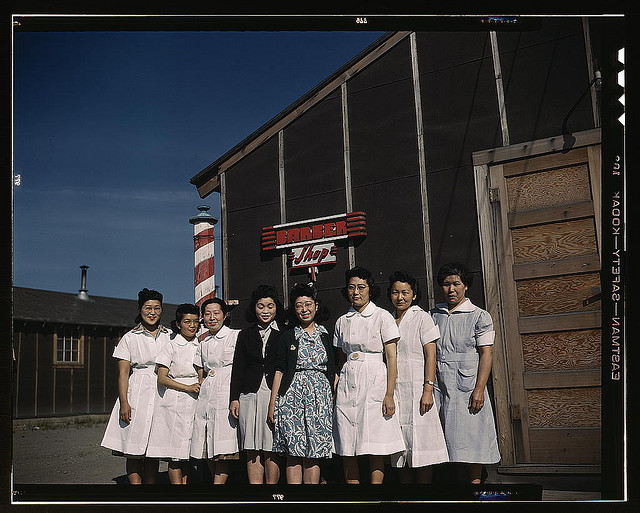Following the attacks on the World Trade Center and Pentagon on September 11, 2001, many American citizens called for closer scrutiny of Muslims, and a few people called for internment of Muslim Americans. The parallels between this discourse and the anti-Japanese sentiment in the U.S. following the attack on Pearl Harbor are clear, but Americans continue to have some of the same concerns about “foreign elements” threatening U.S. security from within our borders. Of course, the internment of Japanese Americans provides us with one lens through which to examine contemporary discourses about “un-American” elements in the U.S.
1. Get together with a small group and have each person read one of the following articles and summarize it for the group.
Note: Some of you will find one or more of these articles very difficult to read and perhaps outright offensive.
- Why the Japanese Internment Still Matters by Daniel Pipes
- Airport Security: Let’s Profile Muslims by Asra Q. Nomani
- In Defense of Internment by Michelle Malkin
- TSA: A Portrait in Islamization by Rabbi Aryeh Spero
2. Together as a group, read and discuss the following blog post.
- Should the Government Profile Muslims at Airports? by Muslims for a Safe America
3. Visit the Densho Archive. Log in using the guest access button. Navigate in the left column to “Topics” and then “September 11, 2001 and Aftermath.” Scroll down in the pane on the right to see a list of interviews. You won’t be able to view the interview videos on your iPad, but you can click on the link to the lower right of each video’s page to read the transcripts. Assign group members to read and summarize the transcripts for the following interviews:
- Drawing parallels between December 7, 1941, and September 11, 2001 (Yosh Nakagawa Interview Segment 36)
- Serving as Secretary of Transportation on September 11, 2001 (Norman Mineta Interview Segment 10)
- Parallels between experiences of Japanese Americans and Arab Americans following September 11, 2001: call for political action (Mitsuye May Yamada Interview Segment 43)
- Thoughts on current events and the aftermath of September 11, 2001: “history is repeating itself” (Tom Akashi Interview Segment 55)
- Thoughts on September 11, 2001, as a retired foreign service officer (Lucius Horiuchi Interview Segment 21)\
Were you surprised by these Japanese Americans’ reactions to September 11 and to the Islamophobia that followed the events of that day? Why or why not? Do you think the experiences and opinions of former internees should influence American policy about domestic internment?
4. Discuss these questions.
- To what extent do your reading of Farewell to Manzanar and your understanding of the Japanese internment influence your own opinion about whether internments based on ethnic or religious group should take place today? What else shapes your opinion?
- How relevant do you think the internment of Japanese Americans is to contemporary discussions about interning Muslims?
- Farewell to Manzanar places a family at the center of the internment narrative. How does this emphasis on family, on mothers and fathers and children, affect our understanding of the internment, as well as our feelings about it?
- Can an understanding of history increase empathy toward people who are in one way or another unlike ourselves? Should that be one role of history education in K-16 schools as well as in museums and the public sphere? Explain.
- Are there certain kinds of historical sources (newspaper articles, government documents, journals, video, oral histories, other audio, photographs, artifacts, art, etc.) that seem to provide us with greater insights than others? Do certain kinds of sources allow us to get closer to the experiences or feelings of people removed from our place, time, or culture? Is such “closeness” useful to historians?

